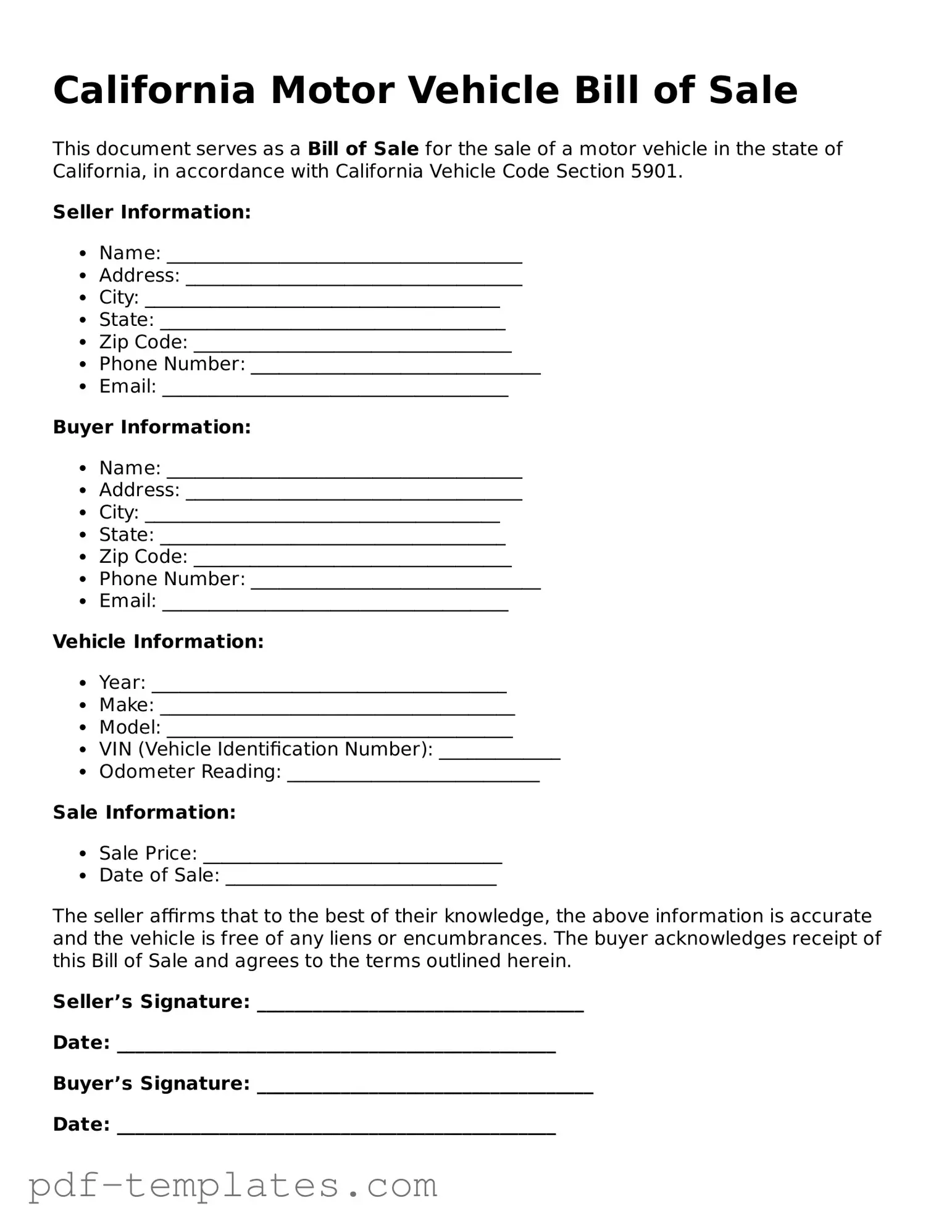The California Vehicle Registration Application is a document that serves a similar purpose to the Bill of Sale. It is used to register a vehicle with the Department of Motor Vehicles (DMV) after purchase. Just like the Bill of Sale, it requires information about the buyer, seller, and vehicle, including the Vehicle Identification Number (VIN). This document is crucial for establishing ownership and ensuring that the vehicle is legally registered in the buyer's name.
The Title Transfer form is another important document that resembles the Bill of Sale. When a vehicle is sold, the seller must transfer the title to the new owner. This form includes details about the vehicle and both parties involved in the transaction. It serves as proof that the seller has relinquished ownership and that the buyer is now the legal owner. Both documents are essential in the vehicle transfer process and often accompany each other during a sale.
The odometer disclosure statement is also akin to the Bill of Sale, as it provides critical information about the vehicle's mileage at the time of sale. Federal and state laws require this disclosure to prevent fraud related to odometer tampering. Just like the Bill of Sale, it must be signed by both the seller and the buyer. This document ensures transparency and helps protect the buyer from potential misrepresentation regarding the vehicle's condition.
The Vehicle History Report serves a different but complementary purpose to the Bill of Sale. While the Bill of Sale documents the transaction itself, the Vehicle History Report provides insight into the vehicle's past. This report includes information about previous accidents, title issues, and service records. Buyers often seek this report to make informed decisions before finalizing a purchase, ensuring they understand what they are buying.
The emissions compliance certificate is another document that bears similarities to the Bill of Sale. In California, vehicles must meet specific emissions standards to be registered. This certificate verifies that the vehicle complies with state emissions regulations. Like the Bill of Sale, it is often required during the registration process and provides assurance to the buyer that the vehicle is environmentally compliant.
Finally, the insurance verification form is essential in the vehicle purchase process, similar to the Bill of Sale. This document confirms that the buyer has secured insurance for the newly acquired vehicle. Insurance is a legal requirement in California, and having this verification is crucial for completing the registration process. Both documents work together to ensure that the buyer is protected and that the vehicle is legally operable on the road.
